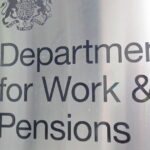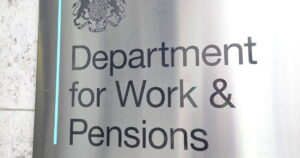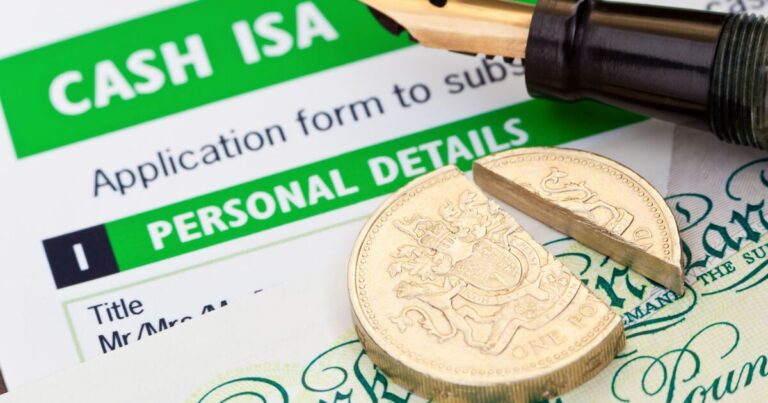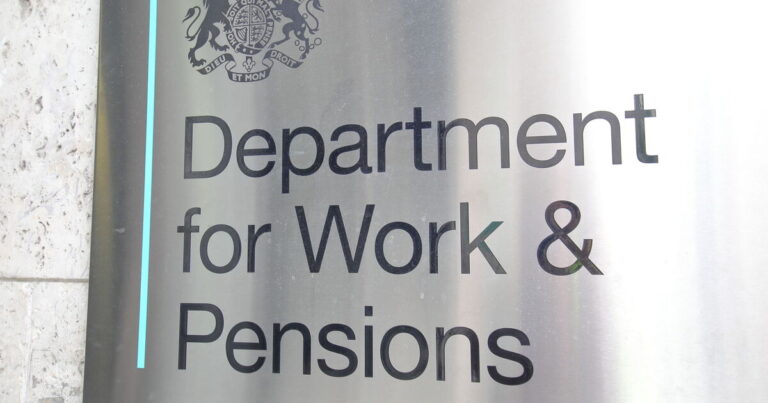This article is an on-site version of our Moral Money newsletter. Sign up here to get the newsletter sent straight to your inbox.
Visit our Moral Money hub for all the latest ESG news, opinion and analysis from around the FT
Hello from London, where marathon runners shared the streets with thousands of climate protesters yesterday.
In the bond markets, governments and development banks have been racing to surprise investors with innovative products and lure them into deals by brandishing their sustainability credentials.
The hottest new flavour is “sustainability-linked”. Chile and Uruguay are the only two governments to have tried this before, but it has huge potential to hand investors power to hold countries to account on their decarbonisation goals.
As I reported over the weekend, more governments are expected to issue this type of debt this year, particularly in emerging markets. Unlike almost any other financial instrument, it comes with clear built-in incentives to decarbonise: repayment costs increase when targets are missed and can fall when they are met.
Simon Zadek, chair of an initiative by the Swiss non-profit Nature Finance to build a set of norms around sustainability-linked sovereign debt, told Moral Money the logic behind climate and nature-linked debt is: “I’m going to make sure a tree doesn’t fall down, and when I prove it doesn’t you give me a reward.”
The attraction for governments is that they don’t have to ringfence cash raised for specific deals — an idea that underpins the $80bn in annual green bond issuances by governments, but which has always appeared dubious because of the essential fungibility of money.
See below for another wacky example of debt market innovation that borrows from the SLB idea but is its own thing altogether: Vietnam and the World Bank’s carbon-offset linked bond.
But first, read on for Simon’s story on a push into hydrogen from investors in the French capital. And is it time to rethink the S in ESG? ESG proponent Hiro Mizuno thinks it might be. (Kenza Bryan)
Join Mairead McGuinness, Elizabeth Maruma Mrema, Sacha Sadan, Sue Lloyd and FT writers covering responsible business and investment at the Moral Money Summit Europe on May 23-24, in London or online. As a newsletter subscriber, save 15 per cent off on the in-person pass or join us for free online.
After my look at green steel in northern Sweden, I found myself on a rainy afternoon near Paris’s Jardin des Tuileries for the next leg of my journey through Europe’s emerging hydrogen economy. In an elegant building on the ancient Rue de Richelieu is the office of Hy24, which has just raised one of the world’s biggest hydrogen-focused funds — and is now starting to put its money to work.
Pierre-Étienne Franc set up Hy24 after more than two decades at French industrial gases company Air Liquide, the latter part of which was spent focusing on its hydrogen operation. During that time he became aware of a “chicken and egg problem” dogging the nascent clean hydrogen space. Potential customers of proposed green hydrogen projects were unwilling to commit until they saw evidence of strong support from investors — who were, in turn, nervous about customer demand.
Hy24 — a joint venture between investment groups Ardian and FiveT — is aiming to tackle that problem with its €2bn Clean Hydrogen Infrastructure fund, which it closed in October. It raised the cash from a large and diverse mix of investors — including industrial and energy companies such as TotalEnergies, Baker Hughes and Airbus, alongside financial groups like Axa, Allianz and CDPQ. Franc predicts the credibility of these backers will draw other investors and customers to each business that Hy24 invests in, ending the stasis that has been holding these projects back.
The fund has so far deployed about a tenth of its war chest in four businesses. One, a joint venture with Denmark’s Everfuel, is making green hydrogen (using renewable energy) for industrial use in Scandinavia. Another, Spain’s Enegás Renovable, plans to develop a national hydrogen pipeline network. Then there are two German companies: Hy2gen, which makes synthetic fuels using green hydrogen; and H2 Mobility, which is rolling out filling stations for hydrogen fuel cell vehicles.
The geographical spread speaks to the gathering momentum in this space across Europe. But there are challenges — not least Joe Biden’s $369bn Inflation Reduction Act, with its lavish support for hydrogen projects, which has already started sucking investment across the Atlantic.
Franc said the EU’s response — including plans for a new European Hydrogen Bank — was welcome, but far from sufficient to level the playing field, with European countries still restricted in the support they can give to domestic industry. The EU must now “once and for all” either give member states the right to spend big on hydrogen subsidies, Franc said, or deploy serious firepower through the European Commission. “We cannot be in between,” he added.
Hydrogen policy, he argued, could become a “source of European unity” — with countries bound together by a continental energy system using electricity and green hydrogen produced using renewable power from across Europe, as well as sun-drenched north Africa. “But Europe needs to take it very seriously,” he said. “Because if not, we will lose many energy-intensive industries.” (Simon Mundy)
How can a water purifier turn into a carbon credit, and how can this in turn become a coupon payment? This $50mn sleight of hand by the World Bank is expected to start yielding returns for investors next March.
It is the latest in a series of experimental attempts to create environmental and social impact through the bond market by blending capital from development banks and the private sector.
Mobilising private capital was a “priority theme” at the IMF and World Bank spring meetings earlier this month, including the use of innovative “outcome” bonds that incentivise companies or states to reach certain climate goals.
The World Bank issued bonds in February whose proceeds would provide a water purification project with roughly $7mn in investment — the amount the bank would normally have paid investors in coupon payments.
Intraco Carbon, a Ha Noi-based carbon offset developer, said it would use the money to deliver hundreds of thousands of water purifiers to Vietnamese schools, via the government.
Clean water is often obtained in Vietnam by burning biomass, which means the electric purifiers could avoid 3mn tonnes of carbon dioxide emissions over five years.
If the Vietnamese project hits its target for issuing carbon credits, and these are validated by verification body Verra, it will sell some of these credits to pay investors the amount they would have received as a coupon.
The experiment does not fit neatly into either of two usual deal structures for climate-focused bonds. Green bonds are used to raise cash ringfenced for sustainable projects, while sustainability-linked bonds raise general purpose funds but penalise issuers for failing to meet climate targets.
Tony Trzcinka, a senior portfolio manager at New Hampshire-based Impax Asset Management, bought $5mn worth of carbon-reduction linked bonds for the group’s core bond fund. “It’s unique, and it’s scaleable . . . There is clear additionality; this is not something they would be doing anyway,” he told Moral Money. Denmark’s Veliv Pension and US asset manager Nuveen also invested.
In the best-case scenario, the rate of coupon payments will hit about 1 per cent, which Trzcinka said was about four times the amount he would expect from a World Bank bond. And he still gets the benefit of exposure to triple-A-rated and highly liquid debt.
Vietnamese banks lag behind neighbouring countries when it comes to participating in green finance deals, according to a report by McKinsey last summer.
But the country could be a fertile space for unconventional green finance experiments. Agriculture and forestry projects and climate change or pollution programmes can already get preferential access to funding from the state bank.
And the country is about to receive a flood of cash, after agreeing to shift to renewable energy and cap overall power sector emissions at the end of last year in exchange for a $15.5bn funding package from international investors. (Kenza Bryan)
Hiro Mizuno was one of the greatest proponents of ESG as a driver for long-term investing during his time as head of Japan’s GPIF. Speaking remotely on Friday to a CFA Institute conference, Mizuno said it might be time to split social criteria from ESG.
At GPIF, Mizuno said he was determined not to allow people to split up ESG. But now Mizuno says he has changed his mind.
“When it comes to ‘S’, I always found it is almost impossible to agree because S by definition reflects some social value or some value judgment of society,” he said.
“The S of ESG is always the weakest link because it reflects the social value of the community,” and S “is actually attracting the attack on ESG as a whole”, he added.
Mizuno is not up for re-election to Tesla’s board, and it has nothing to do with a disagreement with Elon Musk over ESG, he said. Tesla was treated unfairly by S&P when the carmaker was dropped from its flagship ESG index, Mizuno said.
“Tesla’s positive impact on the auto industry to move towards electric vehicles has never been valued in ESG scores,” he added. (Patrick Temple-West)
Why are fast fashion houses included in so many ESG funds? This column by the FT’s Alice Ross gets to the heart of some of the contradictions in index-building, and is also a sobering read for anyone using the arrival of spring as an excuse to revamp their wardrobe.
FT Asset Management — The inside story on the movers and shakers behind a multitrillion-dollar industry. Sign up here
Energy Source — Essential energy news, analysis and insider intelligence. Sign up here















